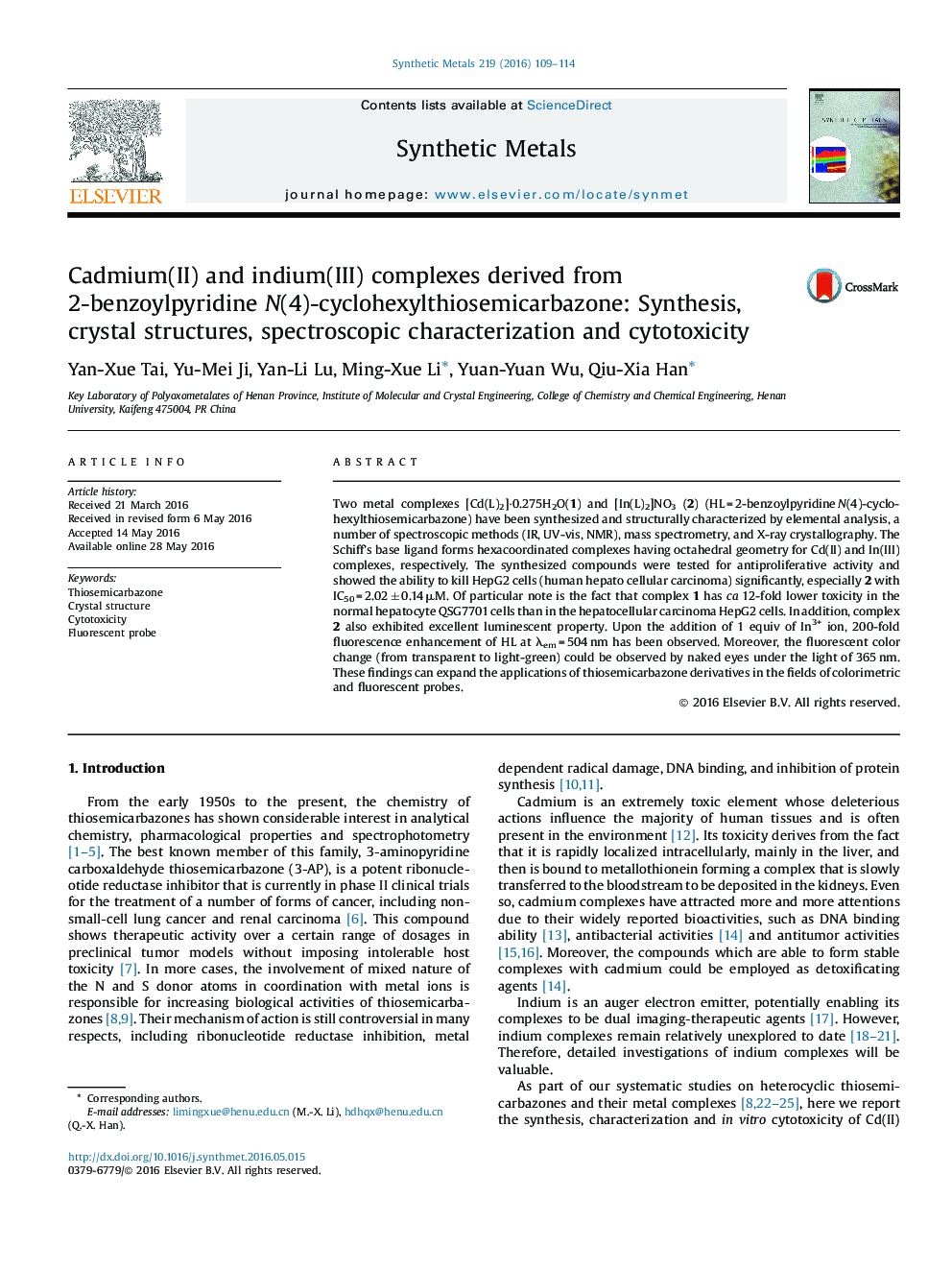| Article ID | Journal | Published Year | Pages | File Type |
|---|---|---|---|---|
| 1440158 | Synthetic Metals | 2016 | 6 Pages |
•Cadmium(II) and indium(III) complexes containing thiosemicarbazone were synthesized.•The title complexes indicated significant cytotoxicity.•Indium(III) complex exhibited excellent luminescent property.•The free ligand can be used as a sensitive probe for In3+.
Two metal complexes [Cd(L)2]·0.275H2O(1) and [In(L)2]NO3 (2) (HL = 2-benzoylpyridine N(4)-cyclohexylthiosemicarbazone) have been synthesized and structurally characterized by elemental analysis, a number of spectroscopic methods (IR, UV-vis, NMR), mass spectrometry, and X-ray crystallography. The Schiff’s base ligand forms hexacoordinated complexes having octahedral geometry for Cd(II) and In(III) complexes, respectively. The synthesized compounds were tested for antiproliferative activity and showed the ability to kill HepG2 cells (human hepato cellular carcinoma) significantly, especially 2 with IC50 = 2.02 ± 0.14 μM. Of particular note is the fact that complex 1 has ca 12-fold lower toxicity in the normal hepatocyte QSG7701 cells than in the hepatocellular carcinoma HepG2 cells. In addition, complex 2 also exhibited excellent luminescent property. Upon the addition of 1 equiv of In3+ ion, 200-fold fluorescence enhancement of HL at λem = 504 nm has been observed. Moreover, the fluorescent color change (from transparent to light-green) could be observed by naked eyes under the light of 365 nm. These findings can expand the applications of thiosemicarbazone derivatives in the fields of colorimetric and fluorescent probes.
Graphical abstractTwo metal complexes [Cd(L)2]·0.275H2O(1) and [In(L)2]NO3 (2) (HL = 2-benzoylpyridine N(4)-cyclohexylthiosemicarbazone) have been synthesized and structurally characterized. Growth inhibition assays have indicated that both the free ligand and the title complexes have shown remarkable cytotoxicity and could slightly distinguish the human hepatocellular carcinoma HepG2 cells from normal hepatocyte QSG7701 cells. This ligand can be used as a sensitive probe for In3+.Figure optionsDownload full-size imageDownload as PowerPoint slide
